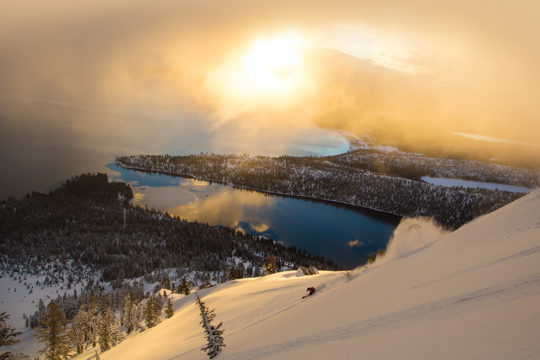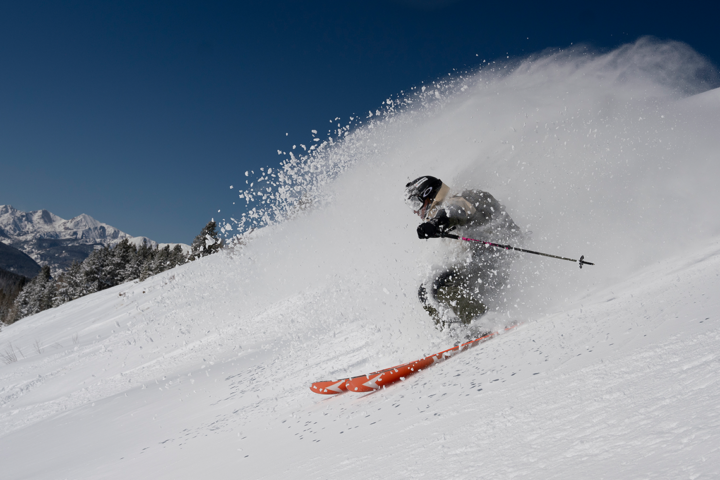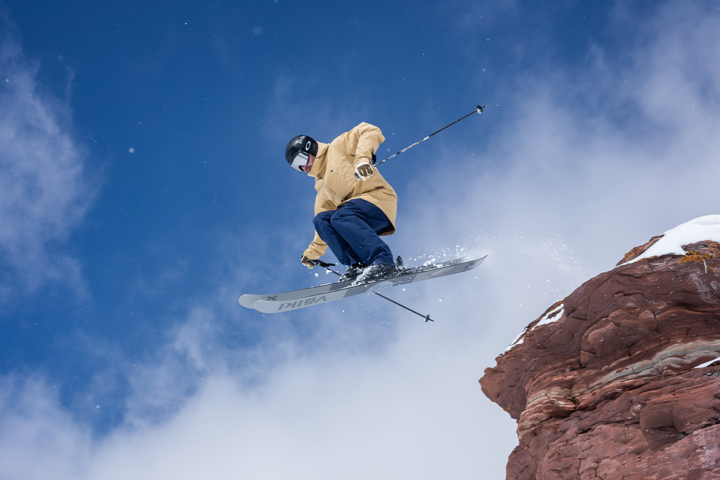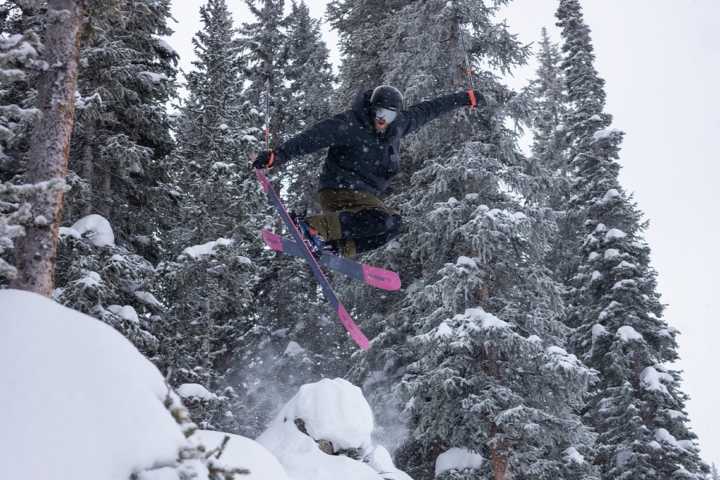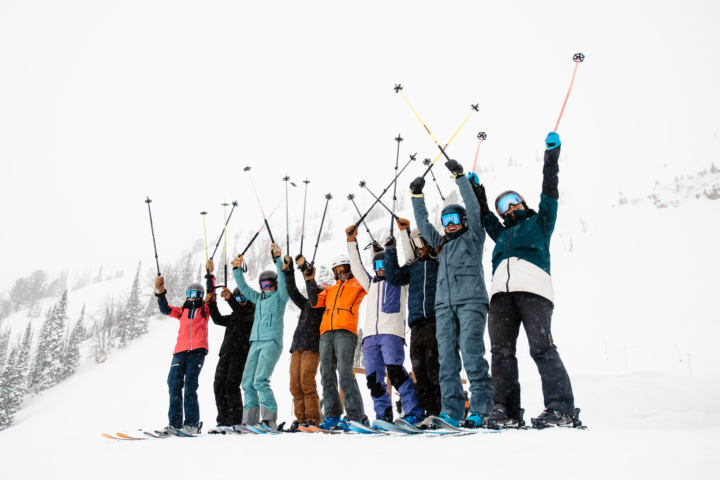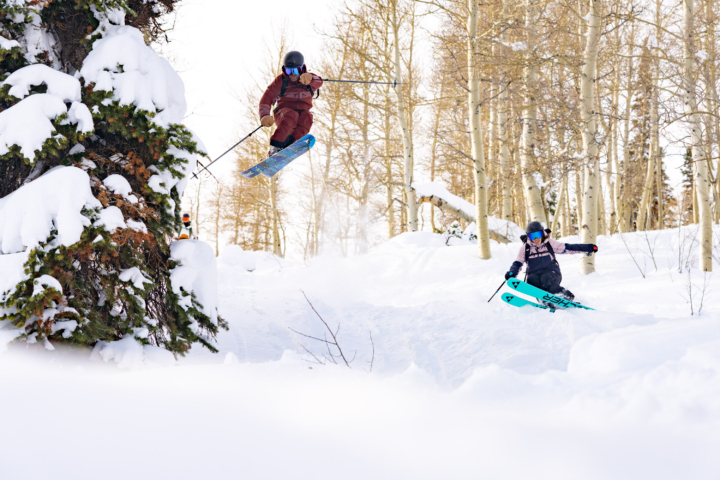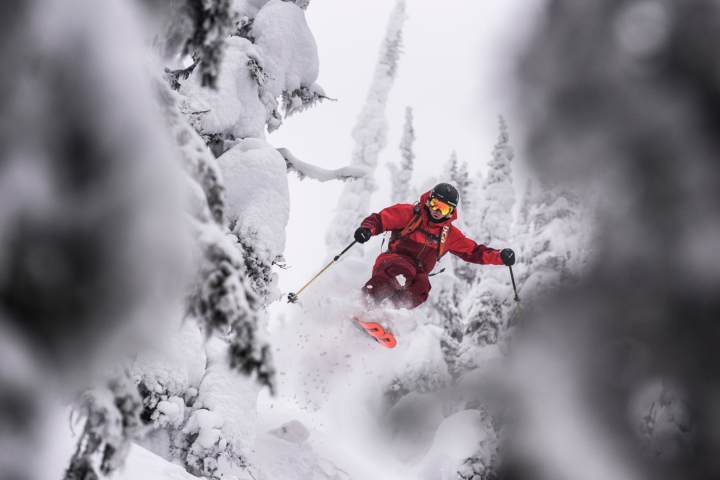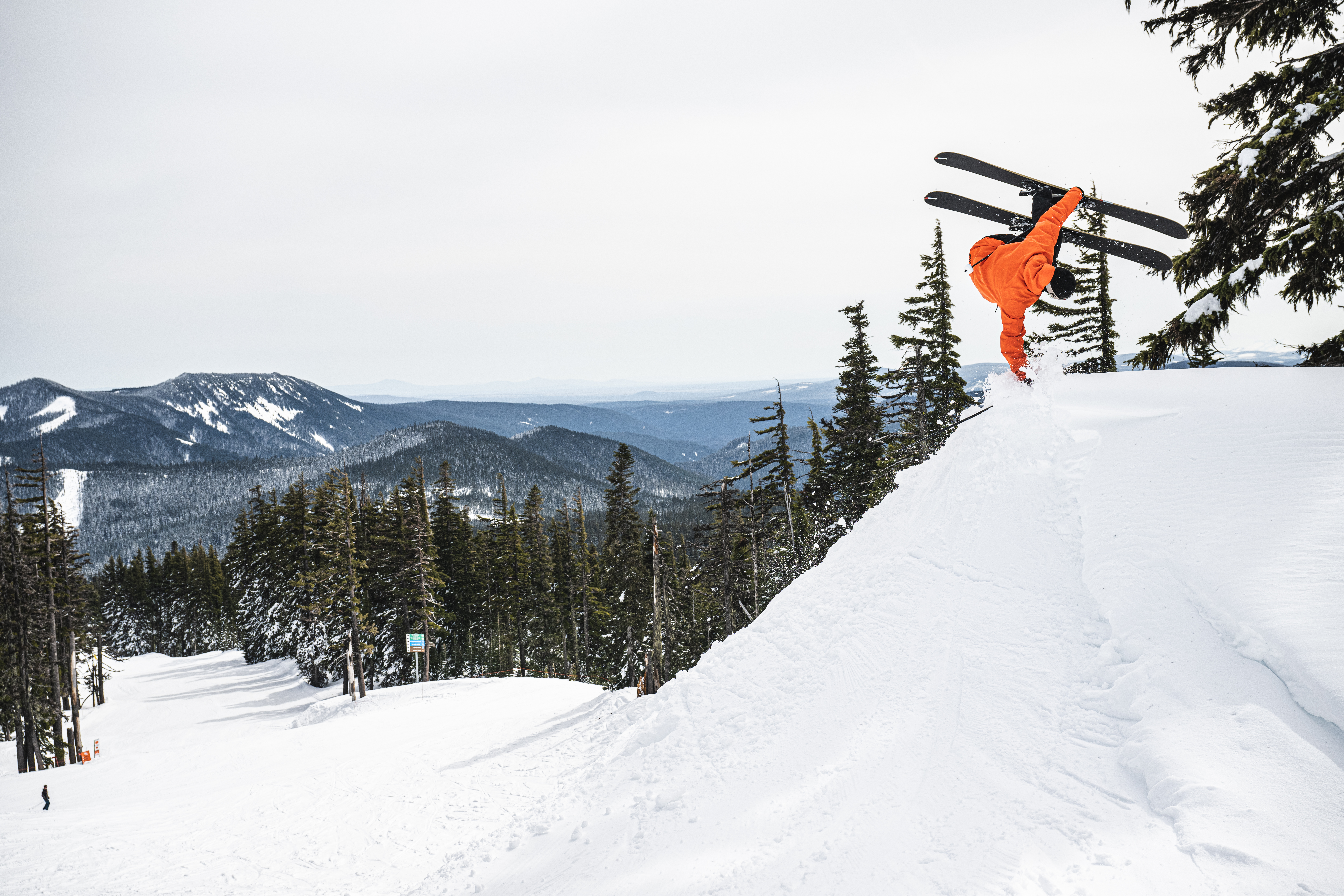
It was mid-January, 2017. On a coffee table inside of an Alta, Utah chalet lay a heap of fibrous and metallic materials. A group of onlookers regarded the pile with inquisitive looks plastered on their faces. As they watched, an effervescent, Italian engineer by the name of Michele Botteon pieced the splayed-out mess together like a puzzle and it became clear to those in the room that he was doing the unthinkable: He was giving away the secret formula to what would prove to be the most critically acclaimed freeride ski of the 2017-18 season.
That mass of carbon, fiberglass and metal formed the core of the all-new Rustler ski, by the Austrian ski maker, Blizzard—a model that resulted from the 70-year-old company’s most extensive testing process to date. Blizzard utilized hundreds of testers across three separate continents to vet a multitude of prototypes. And after 18-plus months of fine tuning, the company was sharing the fruits of its labor with a select cabal of media folk.
Over the course of two days, we enjoyed an up-close-and-personal look at Blizzard’s extensive new line of big-mountain-oriented skis, both on-slope and off. The brand’s leading representatives lured us to Utah’s Wasatch Range partly because, in their view, “skiing is believing.” Yet the point they were trying to make was grander than simply proving how well their products perform (because that would ultimately be determined by the media’s various ski tests, a couple of months later). What Blizzard really wanted to convey to this group of influencers is that it’s committed to freeride skiing, nothing more, nothing less.

Just about anybody who paid close attention to the freeskiing revolution of the late ’90s and early 2000s can tell you that Blizzard had a veritable credibility problem in North America. The company name remained synonymous mostly with racing and on-piste skiing. Brands like K2 and Salomon owned the coolness factor, and thereby the market. So how did this underdog company with a stiff European reputation rise to their same ranks? According to Director of Marketing, Jed Duke, it all circles back to a paradigm shift, aptly put into action.
“Our brand,” explains Duke, “from a global perspective, has committed to the freeride world. It’s because we care about committed skiers. We’re not really a marketing machine, so in the beginning we had to get people to believe in us. We felt through doing our homework and building really good products that people would come.”
For the last two years, that homework involved querying ski instructors, patrollers, retailers, heli guides and “all the different people in freeride,” according to Duke. It also included the Women to Women initiative, which saw a host of Blizzard ambassadors and certified-mountain guides lead an unprecedented female-specific development session in Portillo, Chile. In other words, Blizzard has been listening.
“Blizzard and Tecnica are trying to help women ask the right questions,” says ambassador Claire Brown. “We had a diverse group in Portillo; we all came from completely different backgrounds in the sport, and we covered the spectrum of what’s important to the majority of women skiers.”
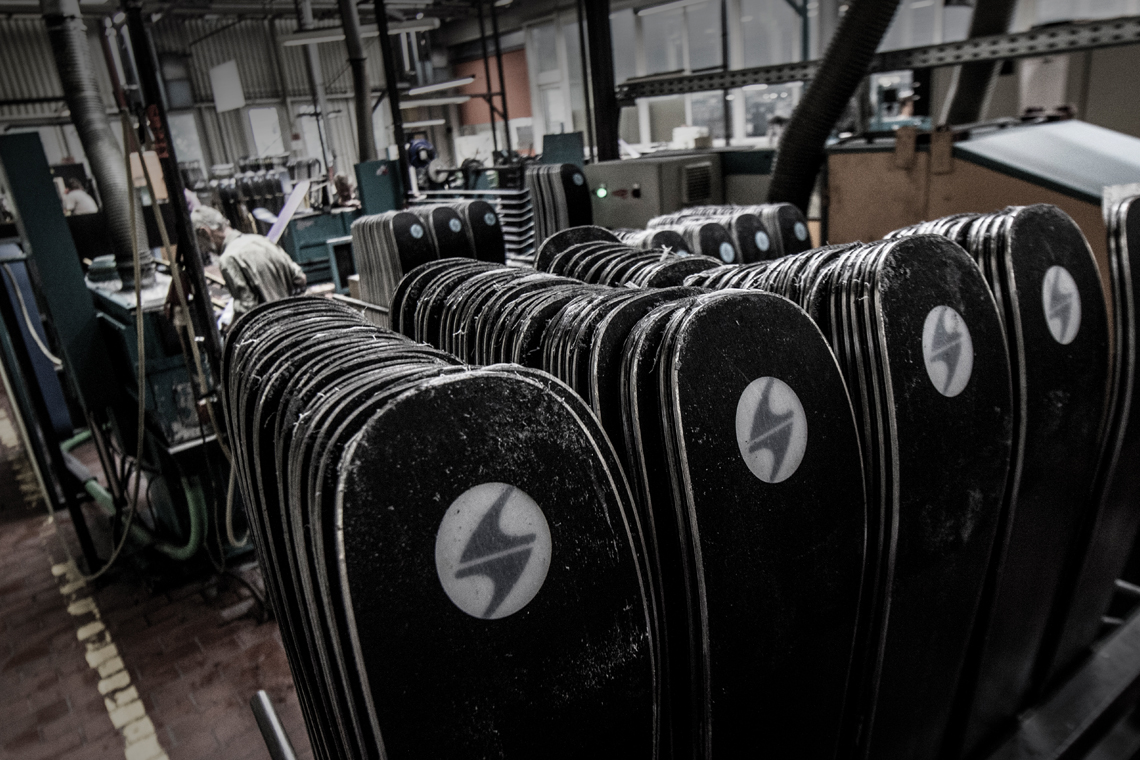
Rewinding, the company’s interest in freeride isn’t new. It had already been outfitting some of the most technical, talented big-mountain skiers in the world for years: 2014 and 2016 Freeride World Tour (FWT) overall Champion Loic Collomb Patton; 2017 FWT champ, Leo Slemett; Warren Miller alumnus Marcus Caston; FWT podium pounder Jaclyn Paaso; and the aerobatic Connery Lundin of MSP Films fame, just to name a few. But that’s an elite within an elite, and Blizzard still hadn’t developed a lineup of skis that spoke to all the different kinds of freeriders. Blizzard’s freeride products were still reputed as being stiff and demanding, and a change was in order to try to reach all the skiers they could.
A couple seasons ago, Duke and co. went through the lineup and softened a few offerings in the hopes of garnering widespread appeal. It didn’t work. Skis like the Cochise—a cult hit amongst hard-chargers like Caston—failed to attract new fans. Blizzard carefully considered why its offerings were not clicking with its potential customers, and even some of its sponsored athletes. The answer, quite simply, had something to do with the fact that not every skier lays their hips into the ground at 60 MPH, a la Caston.
“We recognized that there are two different kinds of freeskiers out there,” explains Duke. “At the pro-athlete level and all the way down to intermediates, some people want a more forgiving ski. And we can’t just dumb down our skis. So we decided we’re going to bring a new group of products within [our freeride collection].”
Caston confirms, “I always just want stiffer, longer, stronger. [Blizzard] already knew that, so for the new line, the designers worked more with guys like Connery and Kyle [Taylor], who are more playful in their approach to the mountains. I just wanted the Cochise to be stiff again.”

With a new mindset to reach all freeskiers, Blizzard set out to have some fun in the process. Its engineers had already made strides in producing notably energetic cores and using carbon only in the rockered tips and tails of its most powerful skis to get rid of dreaded flapping. But “Blizz” still needed a venue to try out its wildest ideas in the pursuit of expanding its appeal amongst the big-mountain crowd. They committed to this wish with the Spur. The beastly ski, first unveiled in 2015, provided the perfect outlet. As Duke puts it, “[The Spur] became our lab project… while we also chased building the best powder ski in the world”.
The trials and tinkering yielded a new, asymmetrical shape that utilizes hydrodynamic (read: relating to the forces acting on solid bodies immersed in fluids) construction elements, borrowed from surfing and intended specifically for powder skiing—because powder snow, it turns out, has roughly the same properties as water. Taken together, the two skis’ tales, for example, mimic the shape of a “fish” surfboard’s tail. Caston, one of the first to have used the ski, says it produces “wildly unique sensations.”
And while there’s only a teeny-tiny market for something so single-purpose, i.e. a ski that’s built solely to obliterate deep powder stashes, Duke says emphatically, “We don’t care. That’s not the point.” The idea, instead, is to be able to travel to the extremes of the most niche needs in skiing, provide the ultimate freeride weapon for the few that need it, and learn what you can from a product-construction standpoint.
And learn they did. The design team—led by chief engineer Stefan Moser and the aforementioned Michele Botteon—surmised they could taper the metal at the tip and tail of the Spur to reduce torsional rigidity. This way, the ski’s extremities release easily and “smear” in soft snow, a desired attribute for many skiers today. Meanwhile, a single layer of unidirectional carbon served to maintain the longitudinal stiffness, ensuring the ski is still stable at high speeds. Dynamic Release Technology (DRT), as they coined it, migrated into the Rustler and women’s Sheeva series.
The exhaustive prototyping measures led Blizzard to employ other key construction elements that would propel the Rustler and Sheeva skis to award-winning status. For example, Blizzard calculated the specific needs of skiers based on ski-length and adapted the dimensions and properties of each Rustler and Sheeva ski, accordingly. That means each ski length (example: 164, 172, 180, 188, 192 cm for the Rustler 11) provides a different experience.

Blizzard’s efforts have been rewarded. The Rustler 10 earned Editors’ Pick status, as did the Sheeva 10 and 11, and also the Cochise—stiff as ever before in its latest iteration. The Rustler 11 also earned Editors’ Pick distinction and even claimed the distinction of being FREESKIER’s single highest-scoring ski of 2017-18. Even among the elite skiers of the world, this ski has converted a few purists, Caston included.
“My whole life I’d taken this hard-man attitude about skis,” Caston says. “Stiffer, heavier, longer is better. Right? And then I went up to Canada for a week last March [a couple of months after the engagement at Alta], and the Rustler 11 was the only ski I brought. At first it was so easy to ski I kind of didn’t trust it. But then once I did, I’d never had so much fun. I skied so hard on those things, they never let go, and I never got tired.”
Thankfully, neither did Blizzard. As the industry’s media cool kids packed up and left Utah behind, buzzing from that special weekend, the smiles on Moser’s, Duke’s and Botteon’s faces said it all. This event was the surprise house party of the school year, and the once overlooked kids who threw it had at last come into their own. And it’s all because Blizzard skis committed to freeskiing.

